What Is Digital PR?
Digital PR (also known as online public relations) aims to build a brand's visibility and reputation through activities like gaining media coverage, high-quality backlinks, and positive mentions across digital channels.
Digital PR typically involves:
- Creating unique content: Developing newsworthy stories, conducting original research, or creating data-driven content that journalists and publishers want to cover
- Building media relationships: Connecting with journalists, bloggers, and online publishers who write about your industry
- Strategic outreach: Pitching stories to relevant media outlets and following up to secure coverage
- Reputation management: Monitoring brand mentions across the web and responding to both positive and negative comments
Digital PR can directly influence how visible and credible your business appears to your target audience. And can also impact your visibility in search engine results since many digital PR tactics can attract backlinks.
Digital PR vs. Link Building
Digital PR builds overall brand authority through a variety of tactics, while link building focuses solely on acquiring backlinks,
More specifically, digital PR focuses on generating media mentions, increasing audience engagement, and building lasting relationships with publishers. It generates links and builds brand awareness in other ways.
For example, one of your digital PR campaigns might be to create an industry research study that builds brand credibility and audience trust. This campaign can also attract authoritative backlinks.
Digital PR vs. Traditional PR
Digital PR expands traditional public relations tactics (which tend to rely on print media, TV, and radio) into online spaces.
Digital PR uses tactics like influencer marketing, online press releases, newsjacking, and social media marketing to people in a targeted way. And you can easily track results.
It’s best to blend traditional and digital PR tactics to maximize brand visibility.
For example, when launching a new product, a modern PR campaign might include both coverage in a traditional newspaper and creating a digital content hub.
What Are the Benefits of Digital PR?
The benefits of digital PR include improved SEO, increased website traffic, stronger brand authority, and measurable marketing results that compound over time.
Here’s a more detailed look at how digital PR can help your business:
- Improved SEO: News coverage and mentions from authoritative sites can create high-quality backlinks that may influence your search engine rankings
- More referral traffic: Features in industry publications can drive qualified visitors directly to your website through trusted media channels
- Stronger brand authority: Coverage in respected publications provides third-party validation that can build lasting credibility with customers and partners
- Measurable results: Digital PR campaigns allow for clear performance tracking via a number of digital tools
Plus, media coverage can continue working long after publication.
For example, if a reputable media outlet covers one of your product launches, that single article can generate traffic, backlinks, and credibility signals over time.
All of which can strengthen your overall digital presence.
5 Digital PR Tactics Proven to Deliver Results (+ Examples)
Let's explore five effective digital PR tactics:
Conduct Data-Driven Research Studies
Data-driven research studies attract media coverage by providing journalists with data that can be used to create compelling stories.
For example, Asana’s 2024 State of Work Innovation surveyed over 13,000 knowledge workers across six countries to reveal what’s holding organizations back.
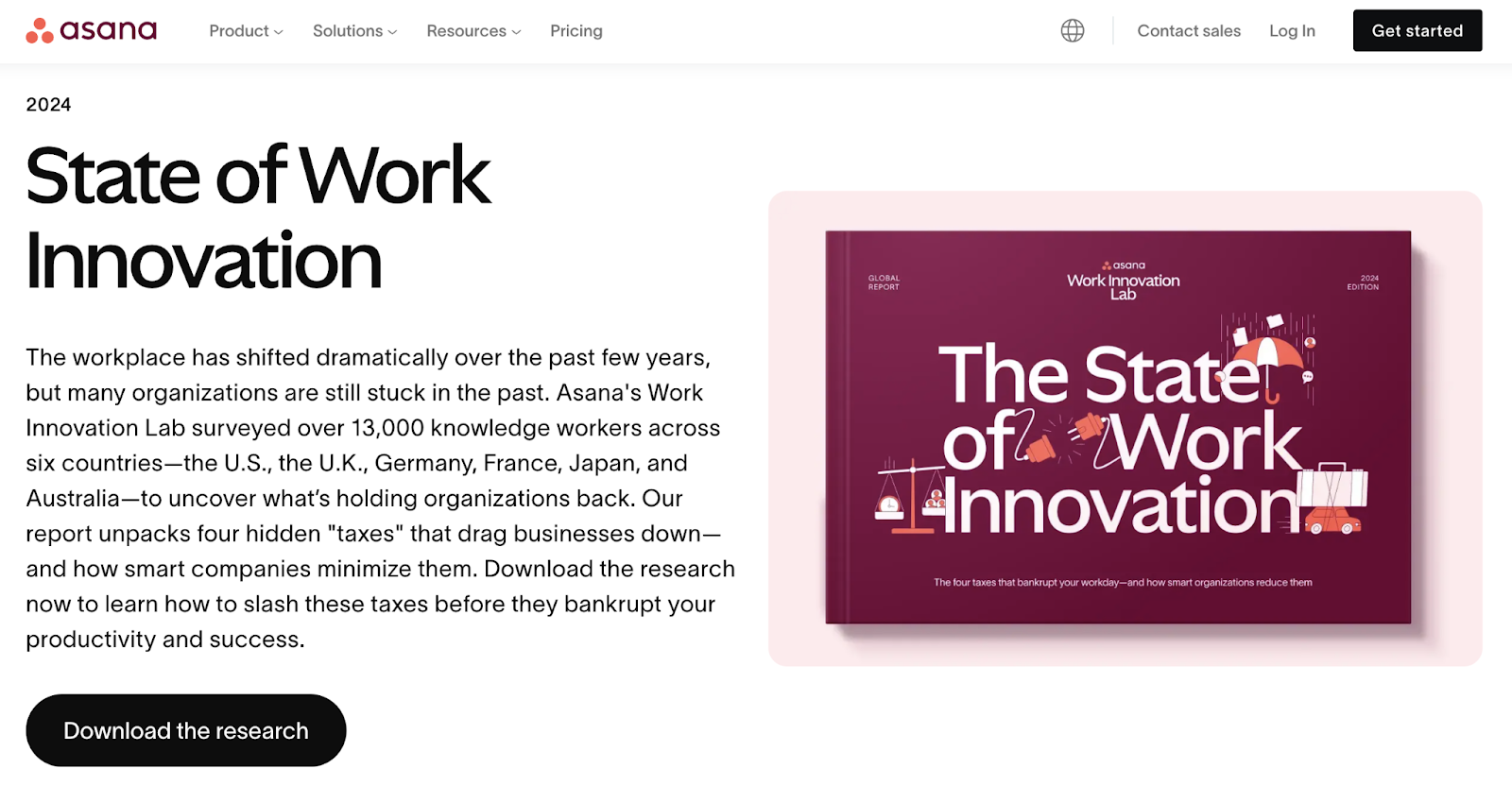
This report earned coverage in publications like VentureBeat and Forbes.
Why it worked:
- Provided original industry research
- Provided specific statistics about AI tool adoption rates
- Discussed different angles around workplace transformation
Launch Creative Campaigns
Creative campaigns earn coverage by presenting familiar information in unexpected ways.
For example, Duolingo's TikTok campaigns have presented Duo (their mascot) as a chaotic personality that works well for viral content. And helped the account reach more than 15 million followers.
In the offbeat videos, Duo has conducted a séance, twerked on an office desk, proposed to Dua Lipa, created a flash mob, etc.

Why it worked:
- Created a memorable brand personality
- Focused on platform-specific content
- Incorporated memorable visual elements
Engage in Newsjacking
Newsjacking involves monitoring the news and reacting to breaking stories with expert insights, comments, and advice to enhance your online visibility and reputation.
For example, cereal brand Surreal capitalized on the recent buzz around AI tools to gain attention on social media.
They posted billboards showing prompts they entered into an AI copywriting tool to help promote the cereal. Then, they shared the results in a viral LinkedIn post:
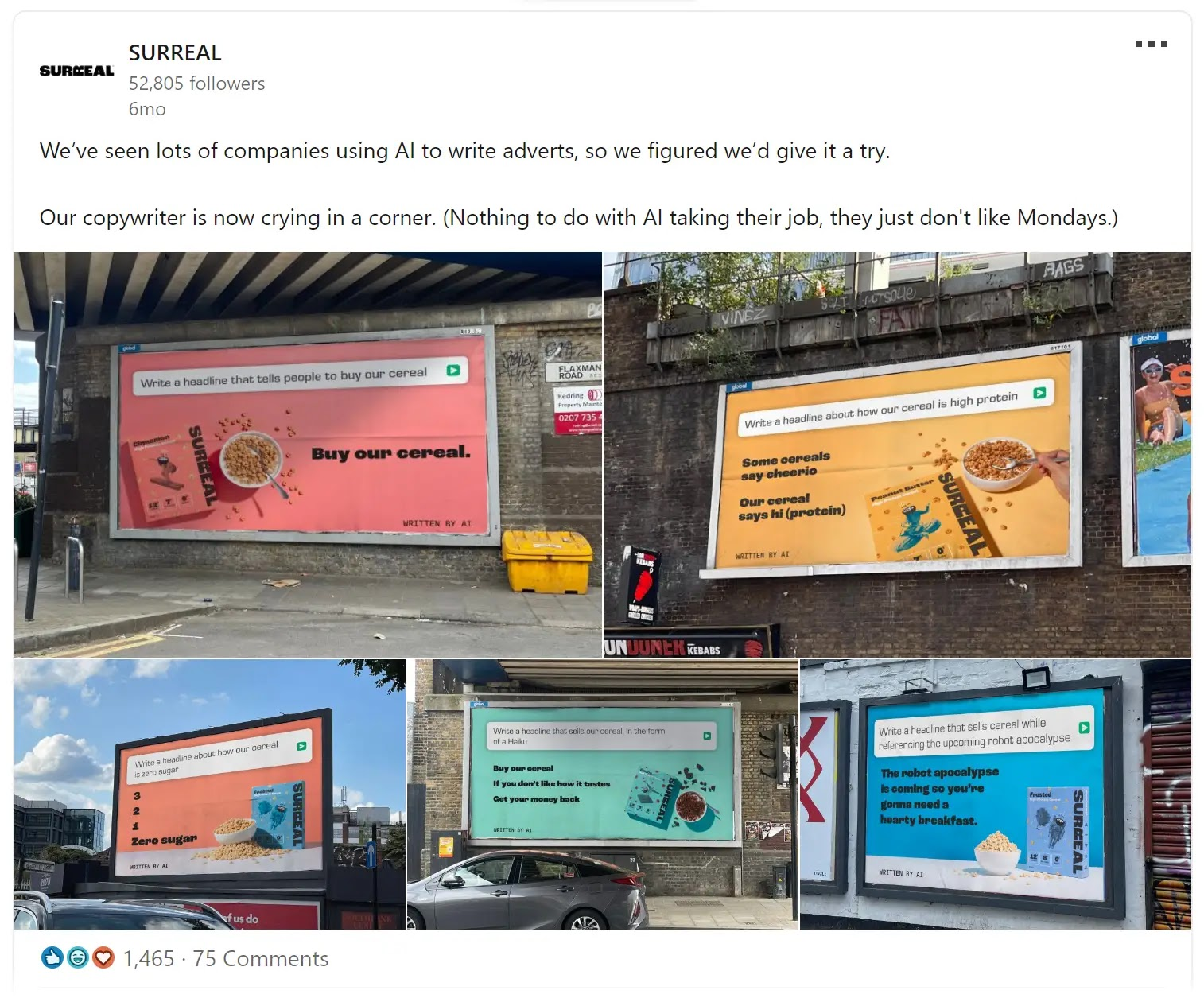
The post got more than 1,400 likes and 75 comments. And the billboards were most likely seen by thousands of people.
Why it worked:
- Involved humorously commenting on a trending topic
- Included their brand in a relevant way
- Encouraged conversation
Share Expert Insights and Thought Leadership
Sharing your knowledge and insights with journalists can be an effective way to earn media attention.
Services like Qwoted are full of journalists looking for experts’ viewpoints. Just find a topic you’re confident in and supply some information for a chance to be featured in a relevant piece.
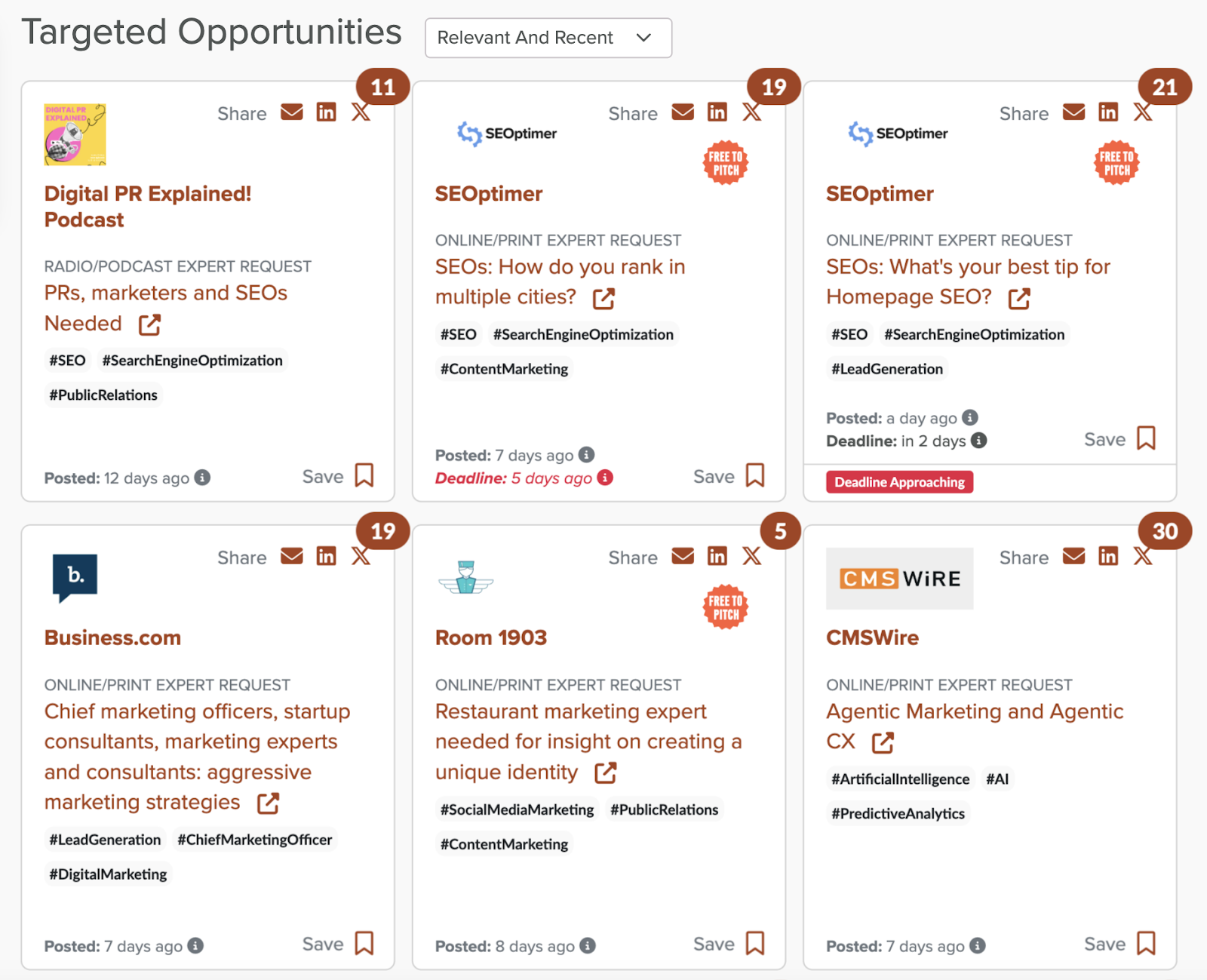
You can also proactively email journalists and media outlets to offer help. Or even pitch them a story.
Why it works:
- Provides value to journalists
- Allows for sharing specific expertise
- Can result in backlinks
Promote Product- or Service-Focused PR
Sharing news related to your products or services by publishing and distributing press releases can also help you earn media attention.
Think about what would make a journalist write about your product. And why someone would want to read about it.
Have you launched a new product line? Opened a new store? Expanded internationally? Introduced new features?
Apple is a good example. When they launched their iPad mini 7, many online media outlets reported on the news.
Like this article from ZDNet :
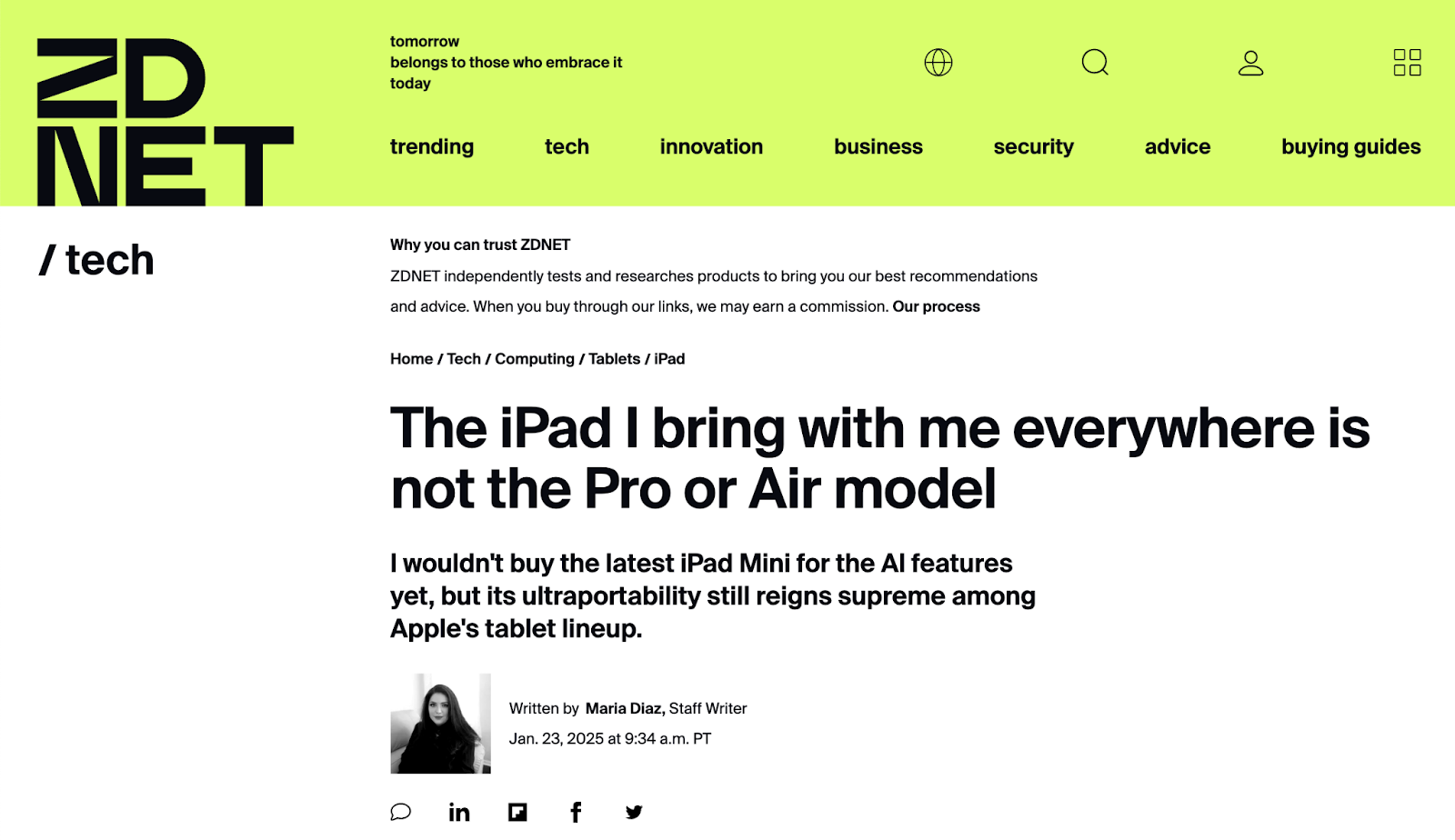
Why it works:
- Provides journalists with information they’re actively looking for
- Positions your company update as a major industry development
- Can result in backlinks
How to Run a Digital PR Campaign
Ready to get started with digital PR for your brand?
Let’s walk through the process step by step.
1. Set Clear Objectives
Define clear, measurable goals for your digital PR campaign because it helps you choose the right tactics.
For each objective you choose, determine at least one tactic, establish metrics to track success, and define a clear timeline.
This approach will help you maximize the impact of your campaign and get meaningful results.
Need some inspiration?
Here’s an example that we’ll use for the rest of the article:
- Goal: Increase brand awareness
- Tactic: Create newsworthy content to pitch industry publications
- Metrics: Media mentions, social shares, brand search volume, and sentiment analysis
- Timeline: Track monthly over the next six months
2. Understand Your Audience
Understanding your audience can help you create stories they’re interested in.
Start by identifying the publications your target audience reads.
Look at industry newsletters and professional communities where your potential customers spend time. Pay attention to the topics that generate the most engagement and discussion.
You can also talk to your sales team to hear what they’ve heard from prospects.
It’s also a good idea to use a tool like Semrush’s One2Target to deepen your understanding of your target audience.
Enter at least one competitor's domain to analyze their audience’s demographic, socioeconomic, and behavioral information.
In the “Demographics” tab, you’ll see the age and gender breakdown:
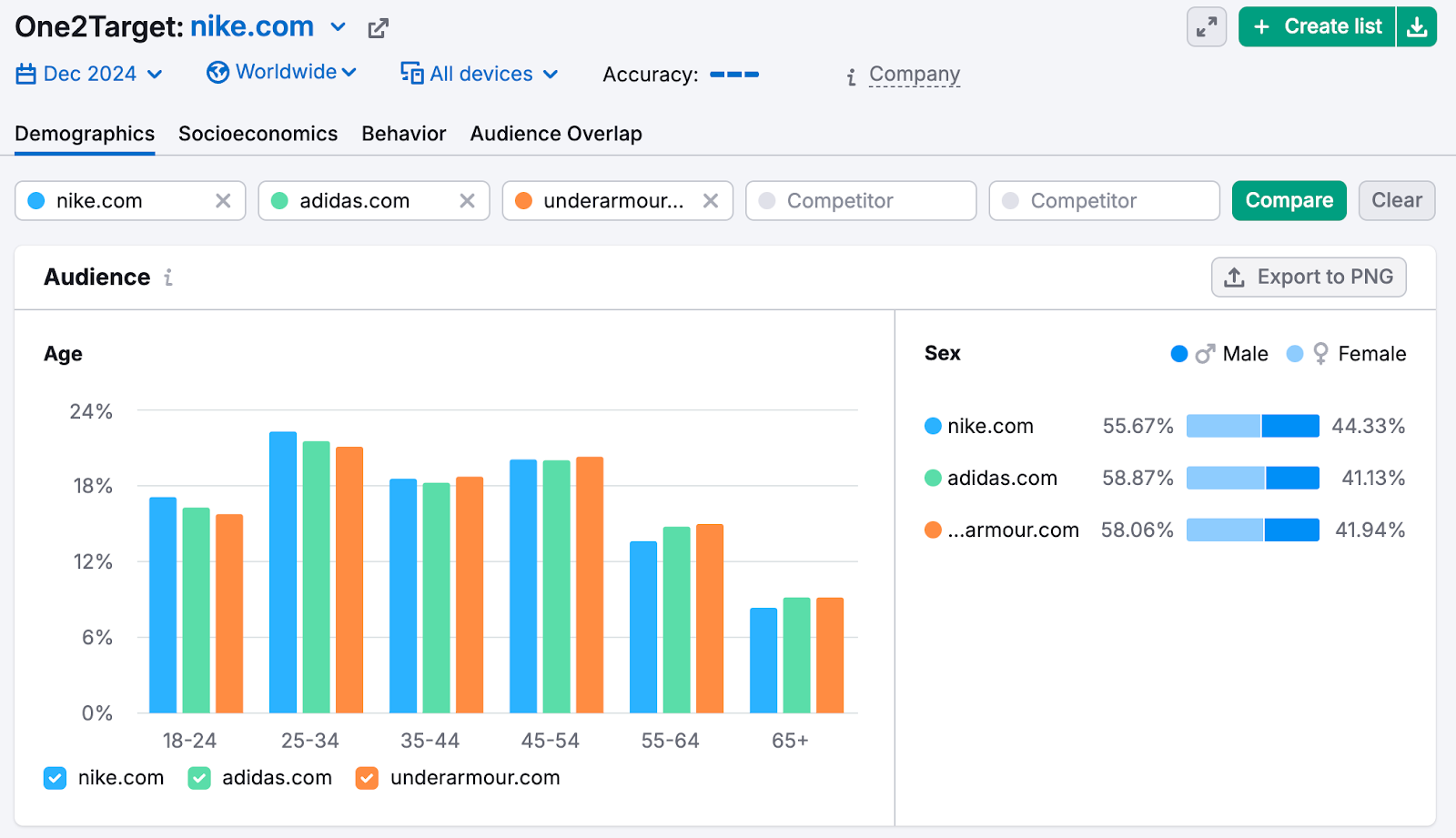
The “Socioeconomics” tab shows more detailed insights, including household size, employment status, income level, and education level:
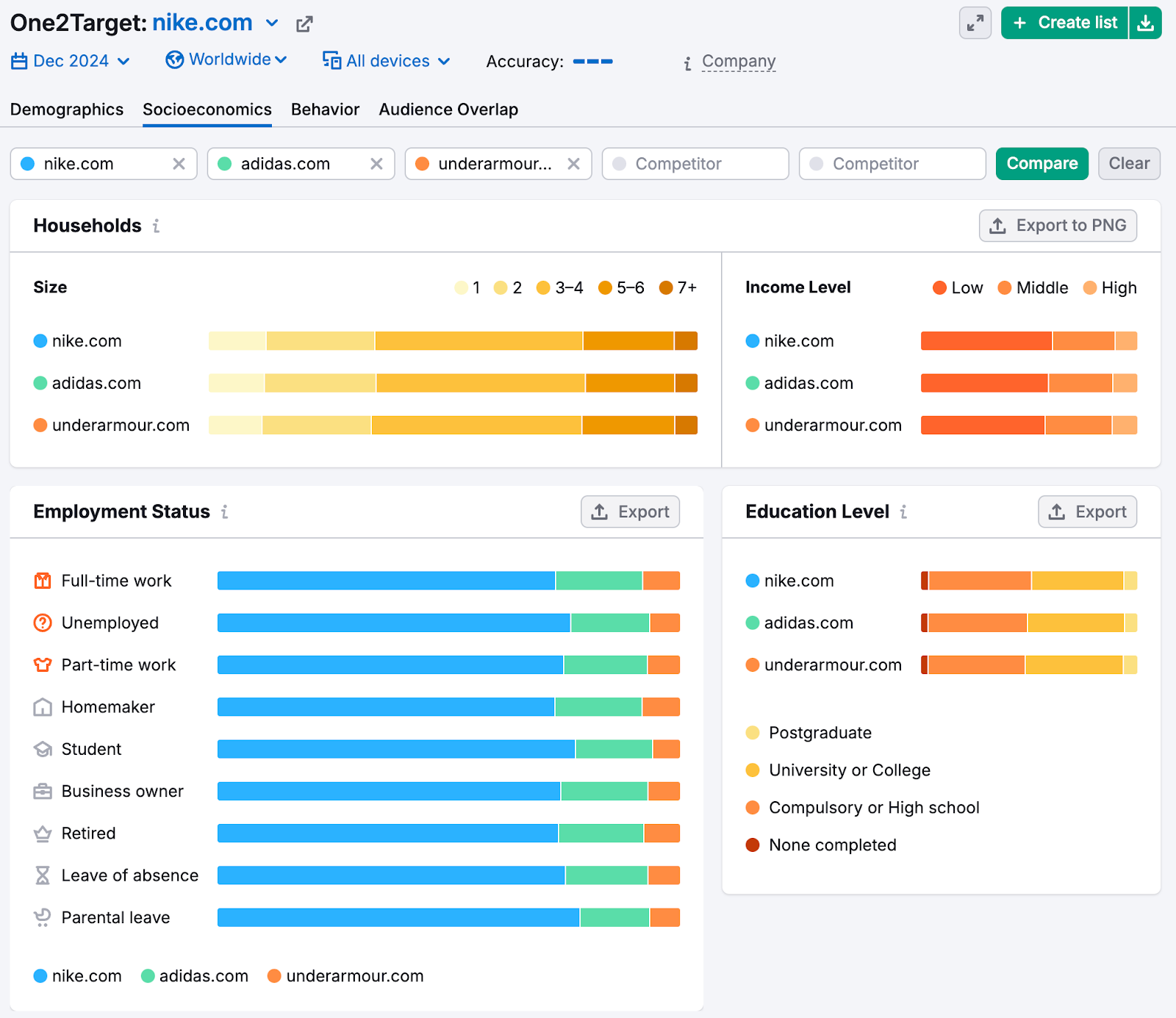
The “Behavior” tab shows where your audience hangs out online and the devices they use.
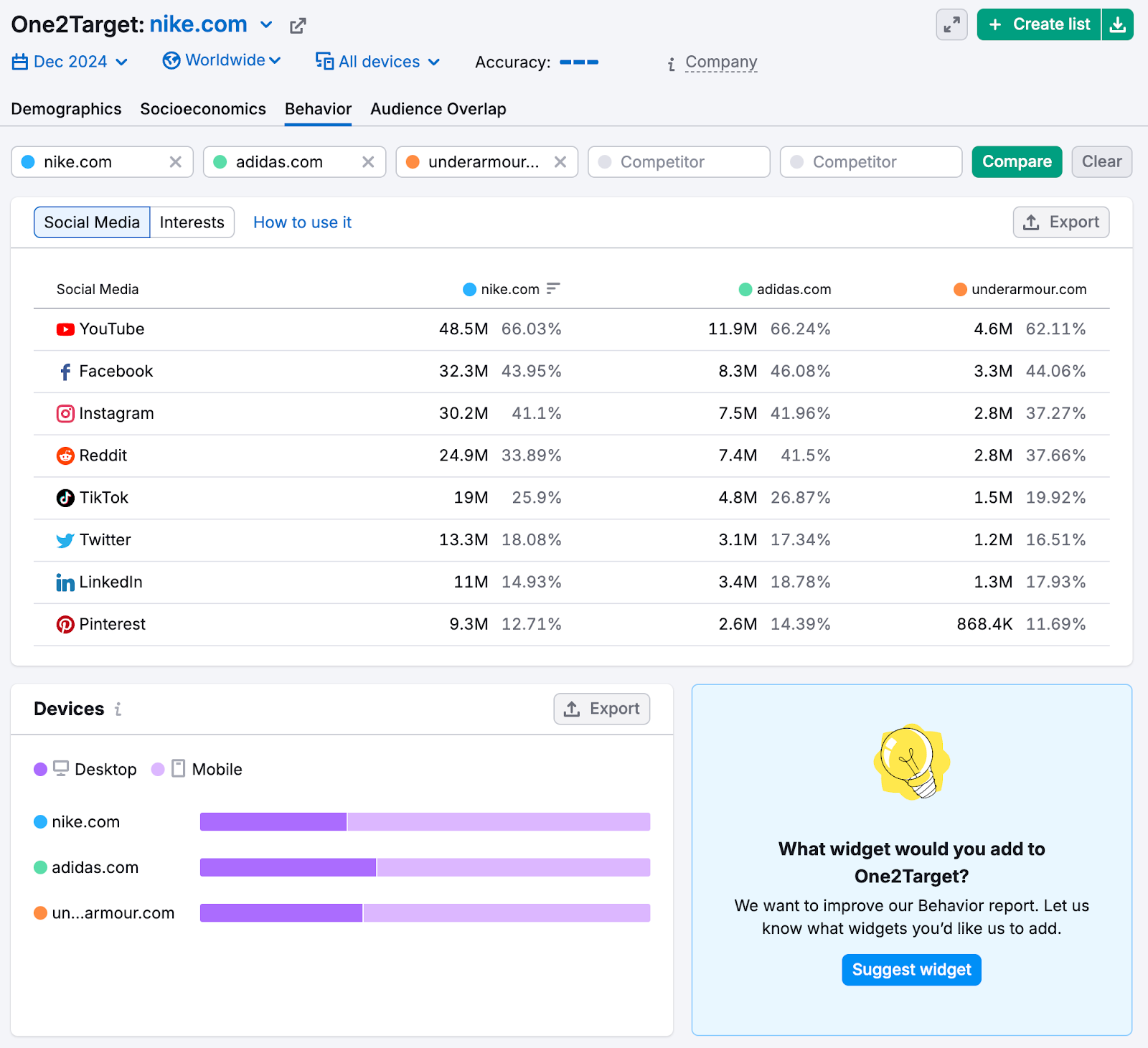
This information can be helpful for prioritizing which channels you focus on for your PR content.
3. Analyze the Competition
Analyze the competition to understand your competitors' PR strategies and find opportunities for your own campaigns.
Start by identifying which competitors consistently earn media coverage in your target publications.
Look for patterns in their successful PR campaigns:
- What types of stories get the most coverage?
- Which publications regularly feature their content?
- How do they position themselves?
- What data or research do they share?
For example, if a competitor is regularly featured in industry publications, analyze whether they're sharing original research, offering expert commentary, or creating unique content formats.
One way to do that is using Semrush’s Backlink Gap tool to find sites that link to your competitors but not to you.
Enter your domain and up to four competitor domains. And click “Find prospects.”
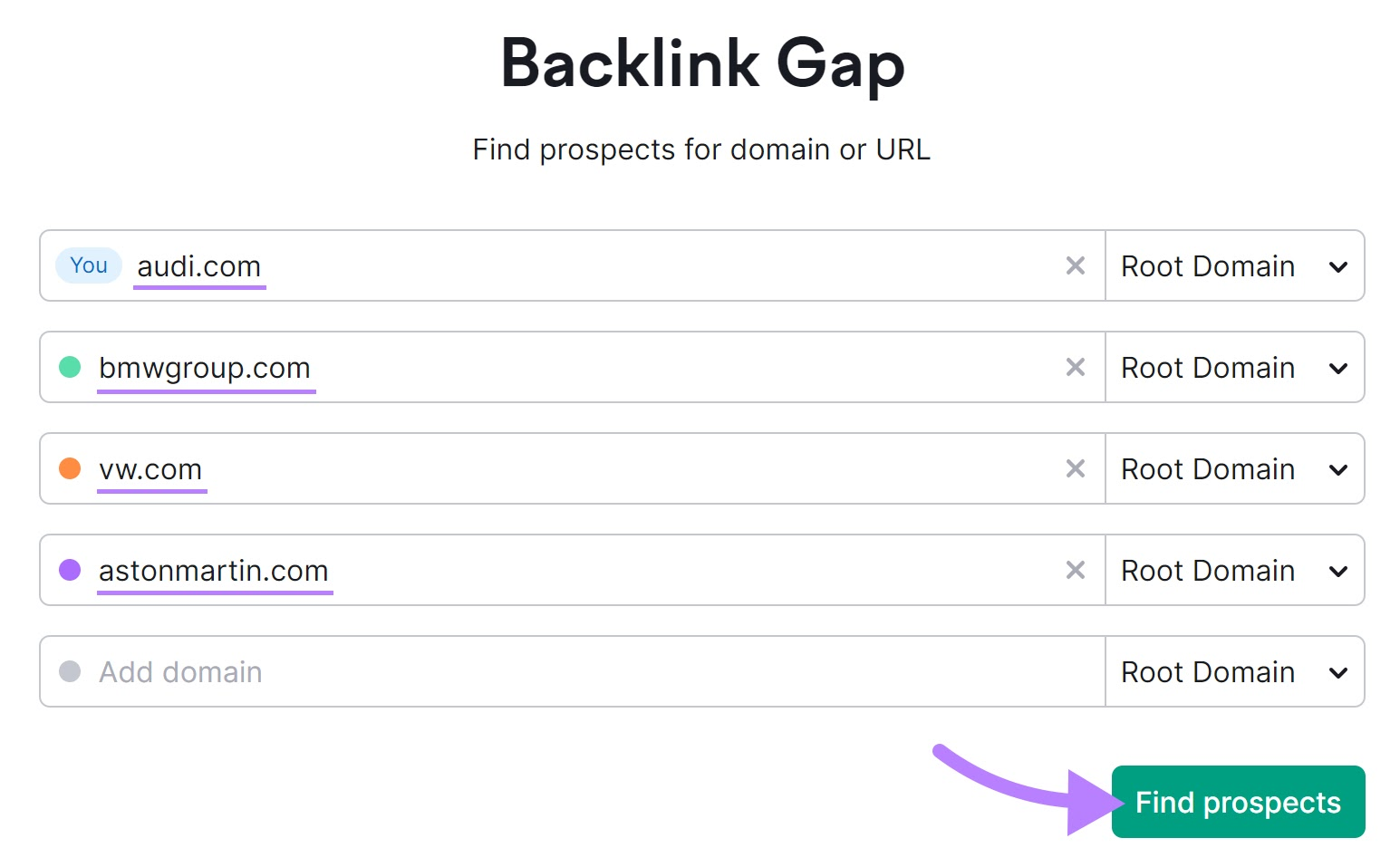
You’ll see a list of sites linking to your competitors.
In the example below, you can see domains like Microsoft, BuzzFeed, and People link to your competitors. But not to you.
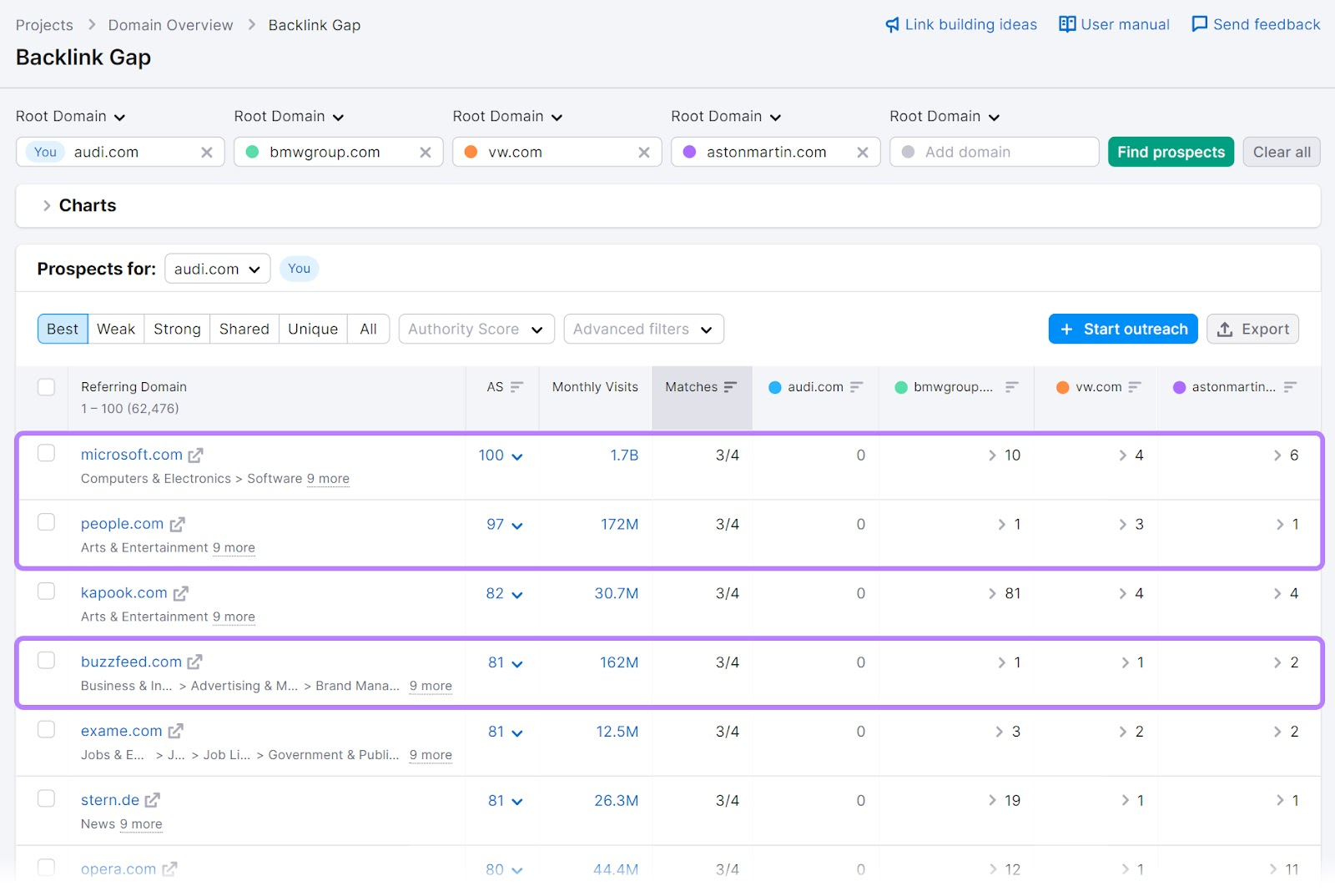
In each row, you’ll see the number of backlinks each competitor has from the corresponding domain.
Click on the arrow to the left of the number to see more details, such as the headline and the specific page it links to:

Reputable sites that link to one or more of your competitors may also be open to linking to you. Which means pitching your stories to those sites first may be a good idea.
4. Brainstorm Newsworthy Content Ideas
Brainstorm newsworthy content ideas or ideas that will attract media coverage before creating content to increase your chances of success.
Start by answering these key questions:
- What unique data or insights can your company share?
- What industry trends are you noticing that others haven’t mentioned?
- What problems does your audience face that aren't being discussed?
Pay particular attention to opportunities to use data. Because strong digital public relations ideas often come from data-based storytelling.
In fact, 61% of journalists want to receive original research and reports from PR professionals, according to a report from Cision.
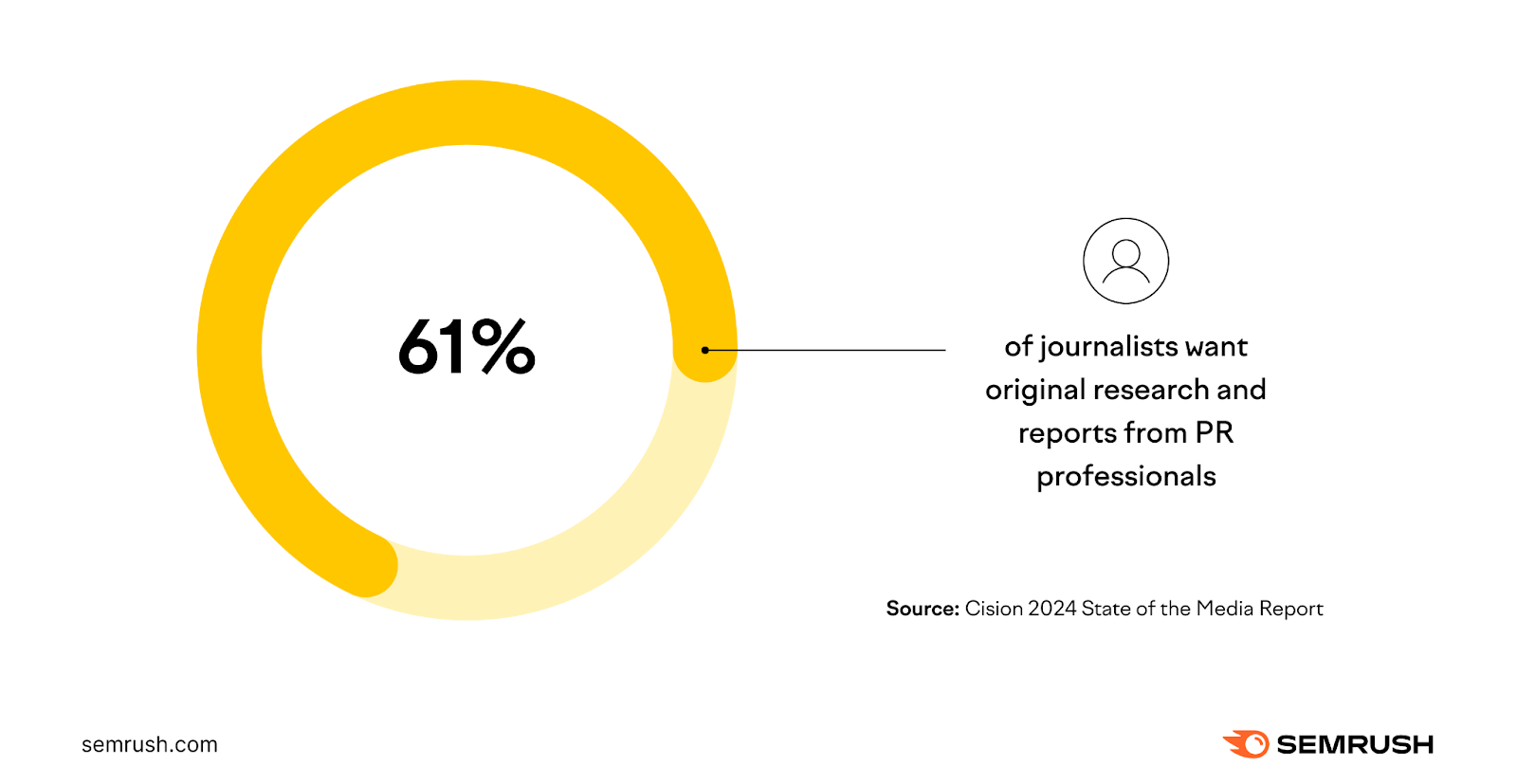
But what topic should you focus your research on?
Find trending topics in your industry using the Topic Research tool.
Let’s say you have a skincare brand. Open the tool, type “skincare routines,” and click “Get content ideas.”
You’ll get a report on related topics.
Make sure to click the toggle next to “Trending subtopics first” to see topics that have been particularly popular over the last 60 days.
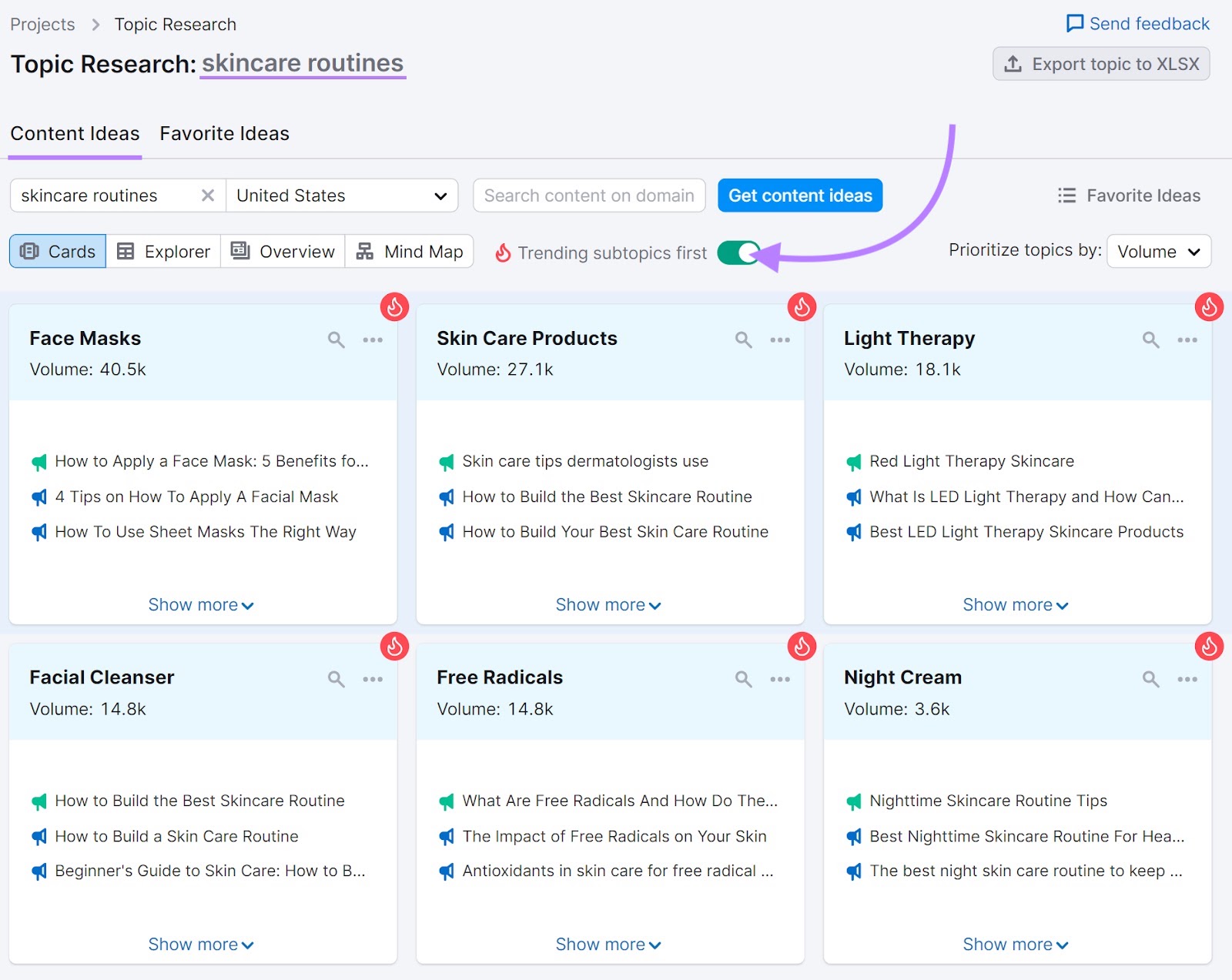
Click “Show more” under any card to see a list of related questions and top headlines.
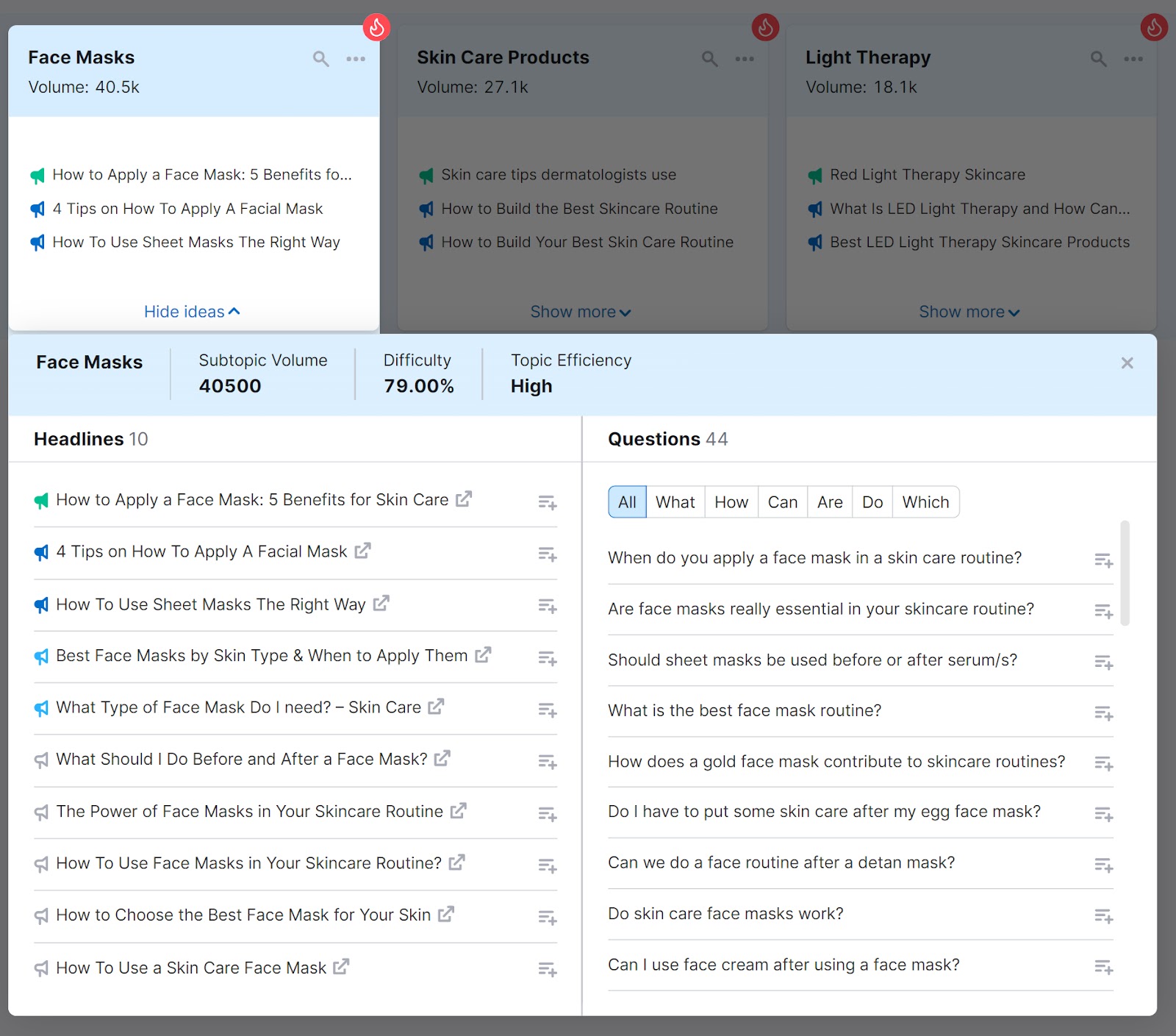
The topic above might inspire you to conduct a study on the ingredients found in different types of face masks. And even reach out to dermatologists to provide more insights.
Then, you can create a data-rich report to distribute via multiple channels.
Let’s go over that next.
5. Create Unique Content
Create unique content that journalists want to cover to ensure you get noticed.
The best digital PR content combines compelling data or insights with clear visual elements that tell a story.
Here’s a rough guide to help you create unique content:
- Start with a strong narrative angle. Structure your content around a central message that journalists can quickly grasp and that readers will want to share.
- Make your content visually appealing and easy to reference by including elements like data visualizations, infographics, and shareable assets
- Include a clear methodology section if you're sharing a research report. Explain how you gathered and analyzed your data. This adds credibility to your findings and helps journalists fact-check your work.
- Package everything in an accessible format. For instance, create a digital press kit with your content, visuals, methodology, and relevant brand assets. This can streamline journalists’ work and increase your chances of getting covered.
For example, Embroker’s Startup Statistics Study has a clear focus (startup culture and success), is visually appealing and easy to understand, and is easy to share:
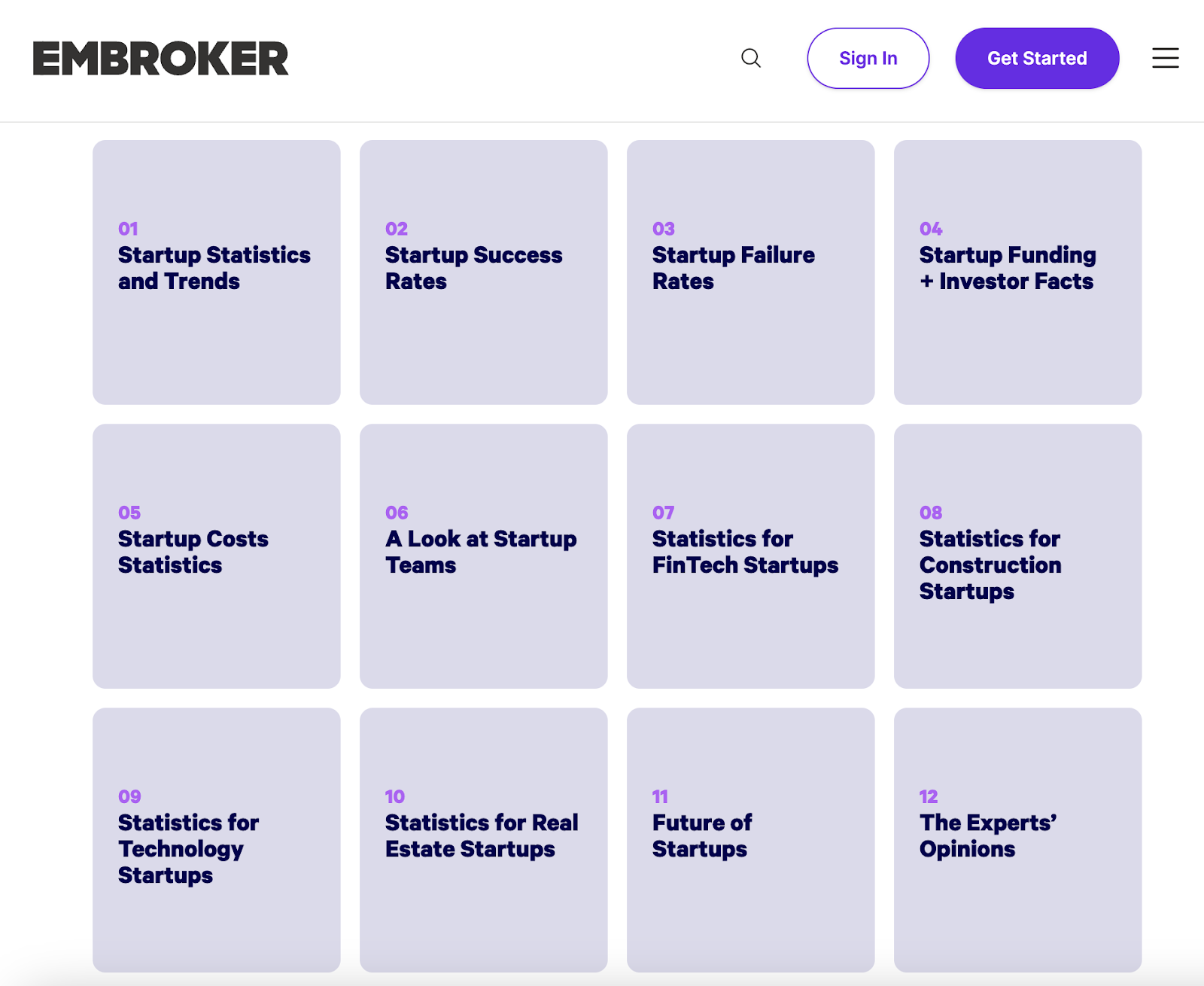
6. Develop a Distribution Strategy
Develop a distribution strategy, so you have a clear plan for how you can share your published content with the world.
Consider distributing your content on the following channels:
- Owned channels like your website, blog, and social media platforms
- Earned channels like news sites and reviews
- Paid channels like ads or influencers on social media
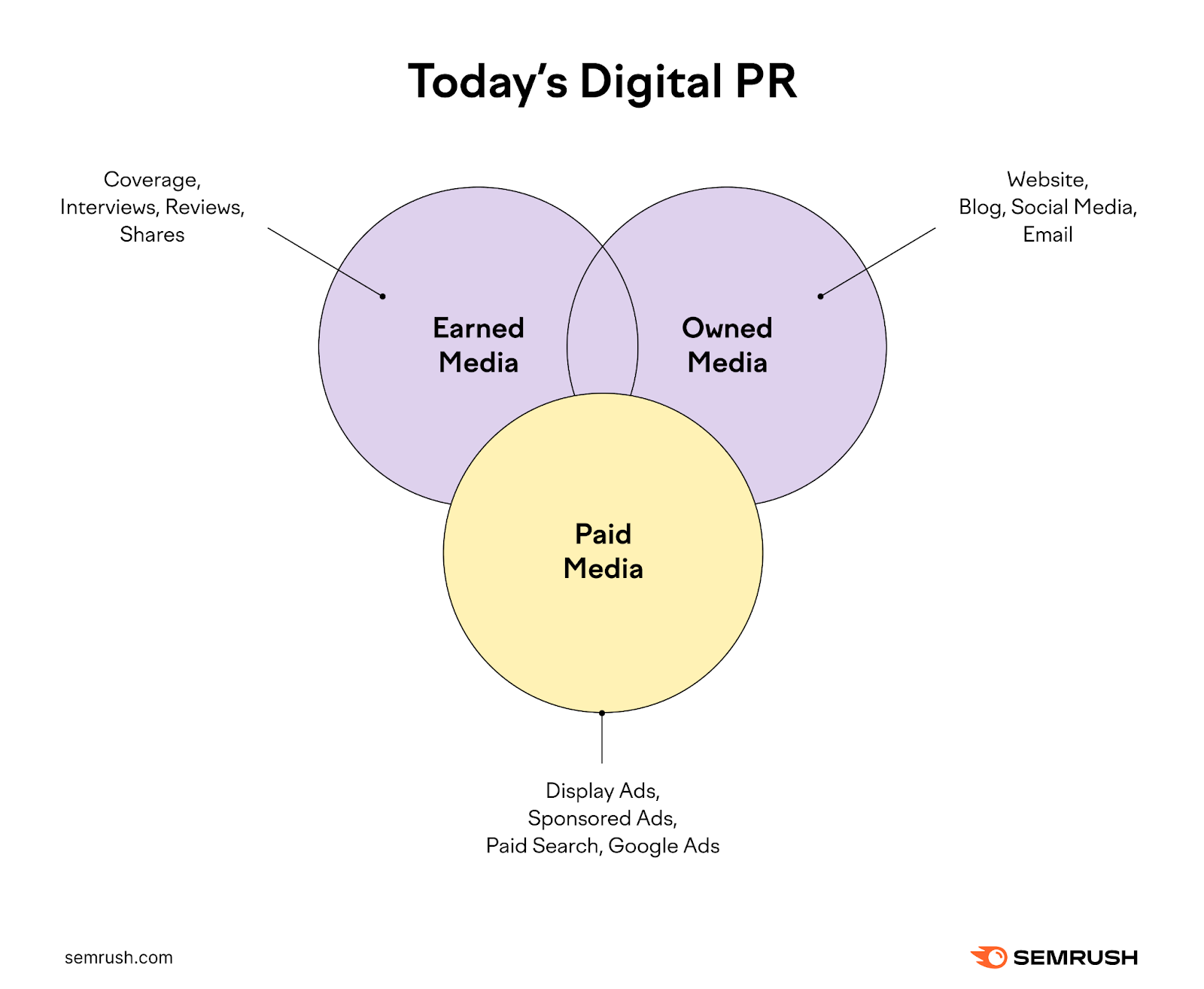
Publishing the content on your website and social media platforms should be pretty straightforward. Same for paid media—if you have the budget for it.
But getting news sites to write about you? That’s where your pitch list comes in.
Start by identifying publications that regularly cover topics similar to your story.
Consider different types of media outlets:
- Industry and trade publications: These specialized outlets focus on a specific sector and often want detailed, technical stories. Their journalists typically have deep knowledge on those topics.
- Mainstream news sites: Look for journalists who cover your industry or related topics for broader publications. They'll need more context but can reach larger audiences.
Once you've identified potential outlets, find the right contact at each publication.
Look for journalists who:
- Recently wrote about similar topics
- Cover your industry regularly
- Show interest in your type of story
Tools like Prowly can help you find the right journalists based on their beat and recent coverage.
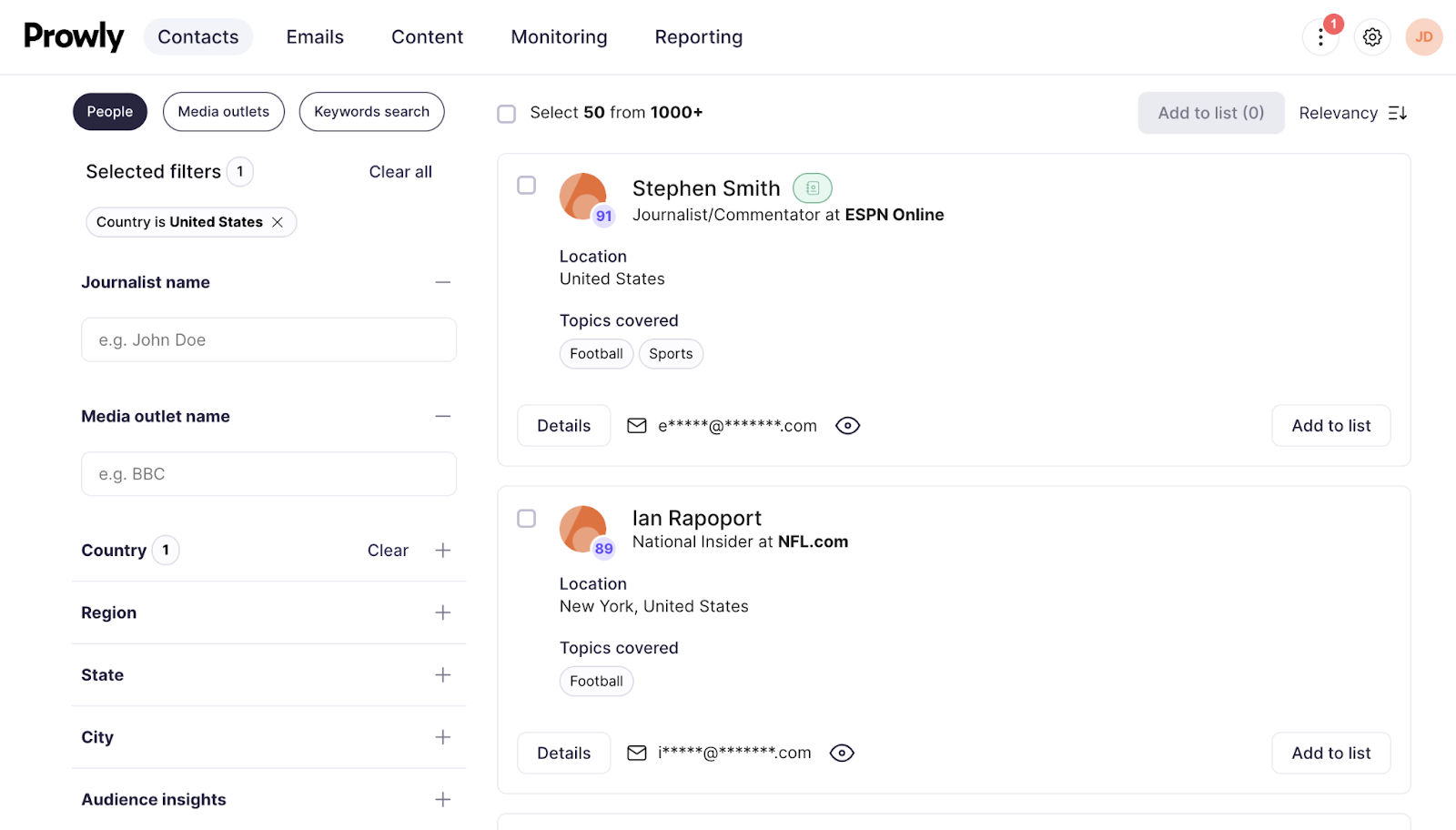
Another option is to work with a PR agency.
An agency will distribute (and often even write) the press release for you.
And they usually have existing relationships with media partners. Which can improve your chances of getting coverage.
7. Write a Compelling Pitch
Write a compelling pitch asking journalists to report on your news or content.
Your pitch email needs to quickly convince journalists your story is worth covering. So, focus on clarity and relevance rather than clever writing or industry jargon.
Start with a strong subject line that summarizes your story's value.
For example, "Research: 73% of Remote Workers to Quit Over AI" is more compelling than "[Company] Releases Remote Work Study."
Next, the first paragraph should mention the following in three sentences or less:
- What's new or noteworthy about your story
- Why it matters to the journalist's audience
- Why it's relevant right now
Then, support your pitch with specific details.
Include key statistics, expert quotes, or research findings that make your story credible and interesting. But keep your pitch brief—journalists can request more information if they're interested.
Finally, end with a clear call to action.
Let journalists know what you're offering (interview opportunities, exclusive data, custom visuals) and how they can get more information.
If you want to skip the manual work, Prowly has a Media Pitching Tool that can help you personalize, send, and track your pitches.
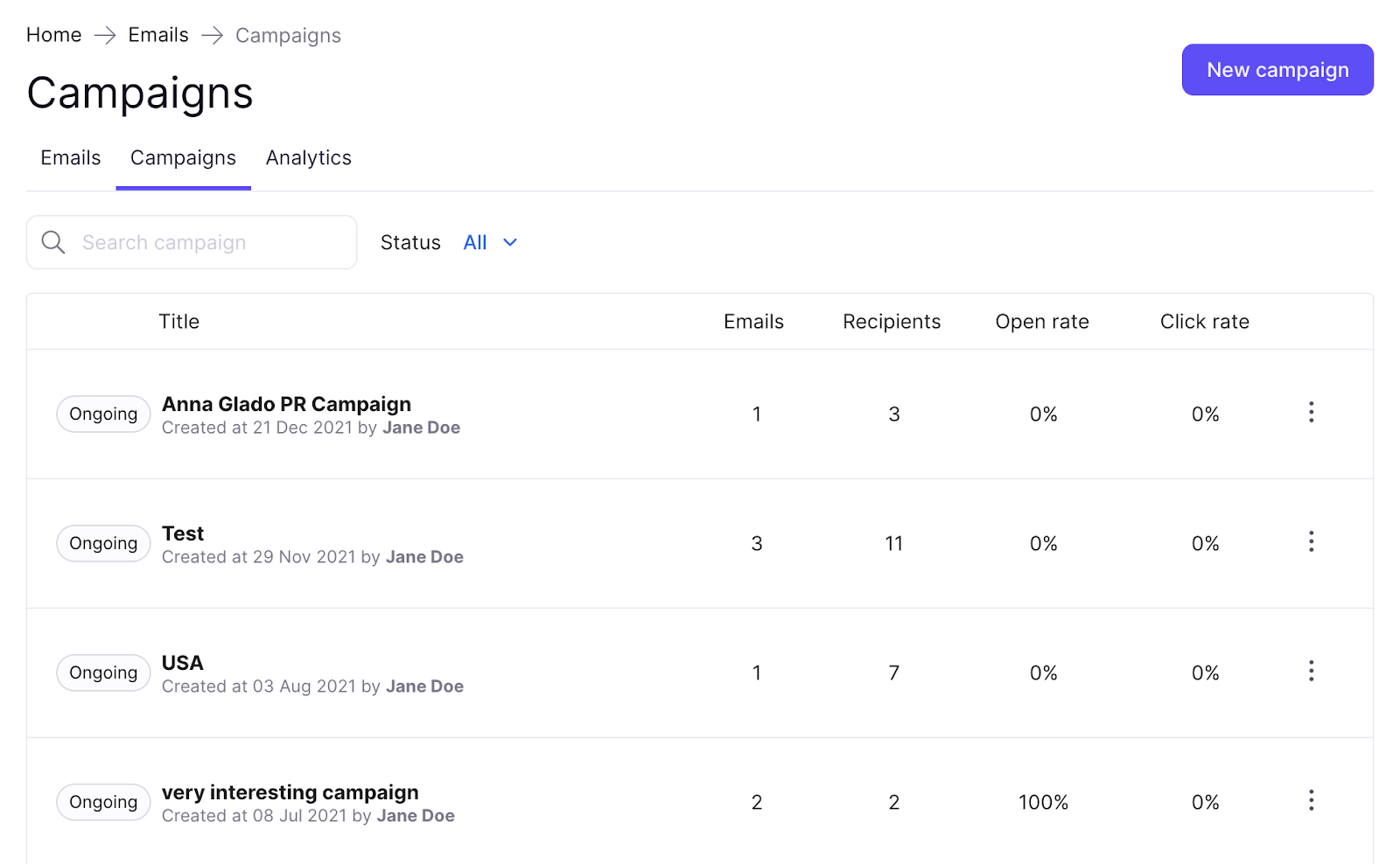
Start Monitoring and Measuring Your Digital PR Impact
Tracking your digital PR results helps you prove return on investment, evaluate your campaign’s effectiveness, and make adjustments where needed.
The exact metrics you monitor will depend on your objectives and the type of tactic you chose to pursue, but here are two solid options if you’ve decided to create newsworthy stories:
First, set up Google Alerts for your brand name to get instant notifications when websites mention you. This gives you a quick way to spot new coverage and respond to any potential issues quickly.
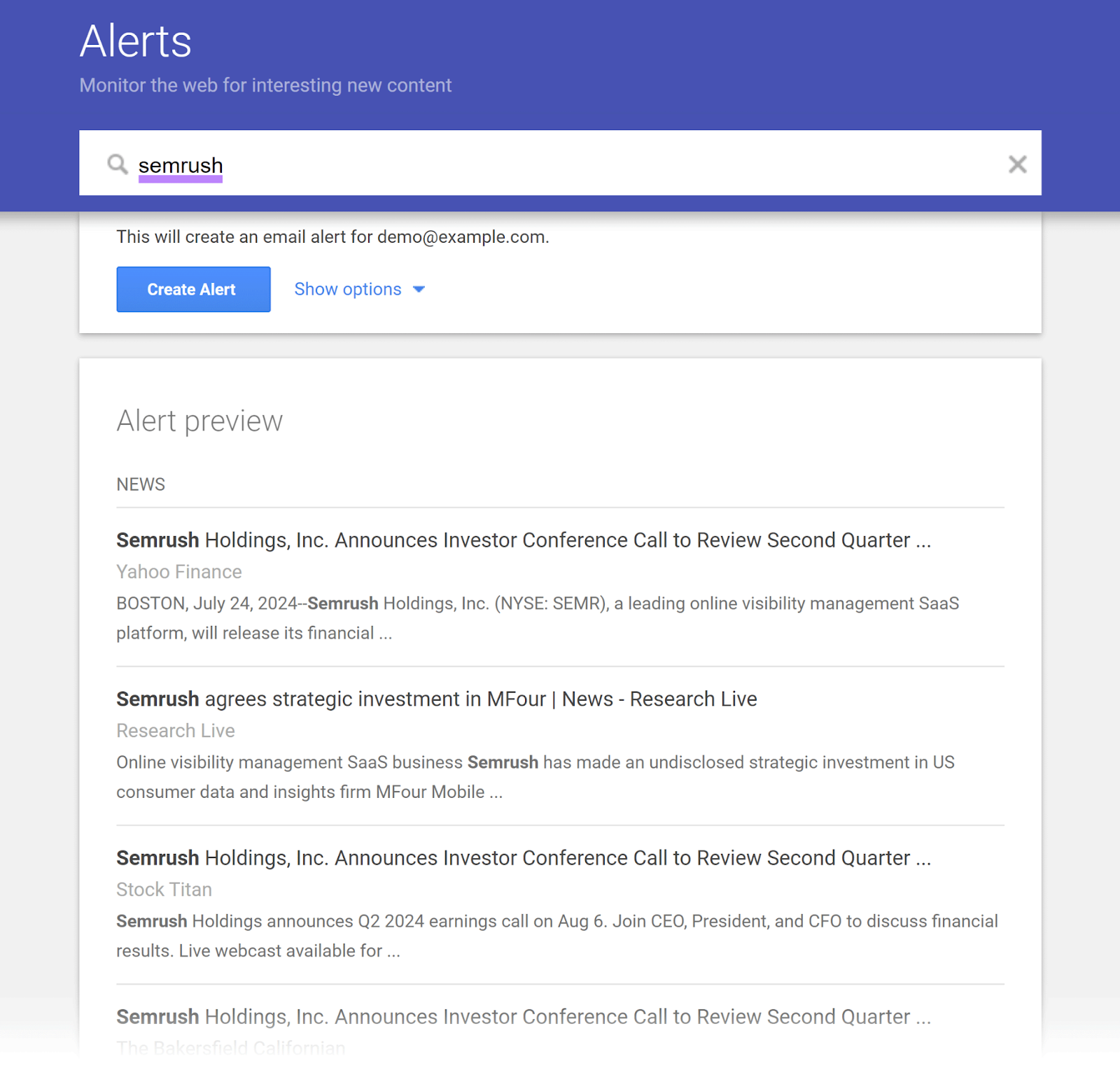
Second, use the Media Monitoring app to get a deeper understanding of how your PR campaign is impacting brand awareness and perception.
Once you set up your project, you’ll see key insights, including:
- The number of mentions over time
- A summary of mentions and the names of the media outlets
- Whether brand mentions were positive or negative
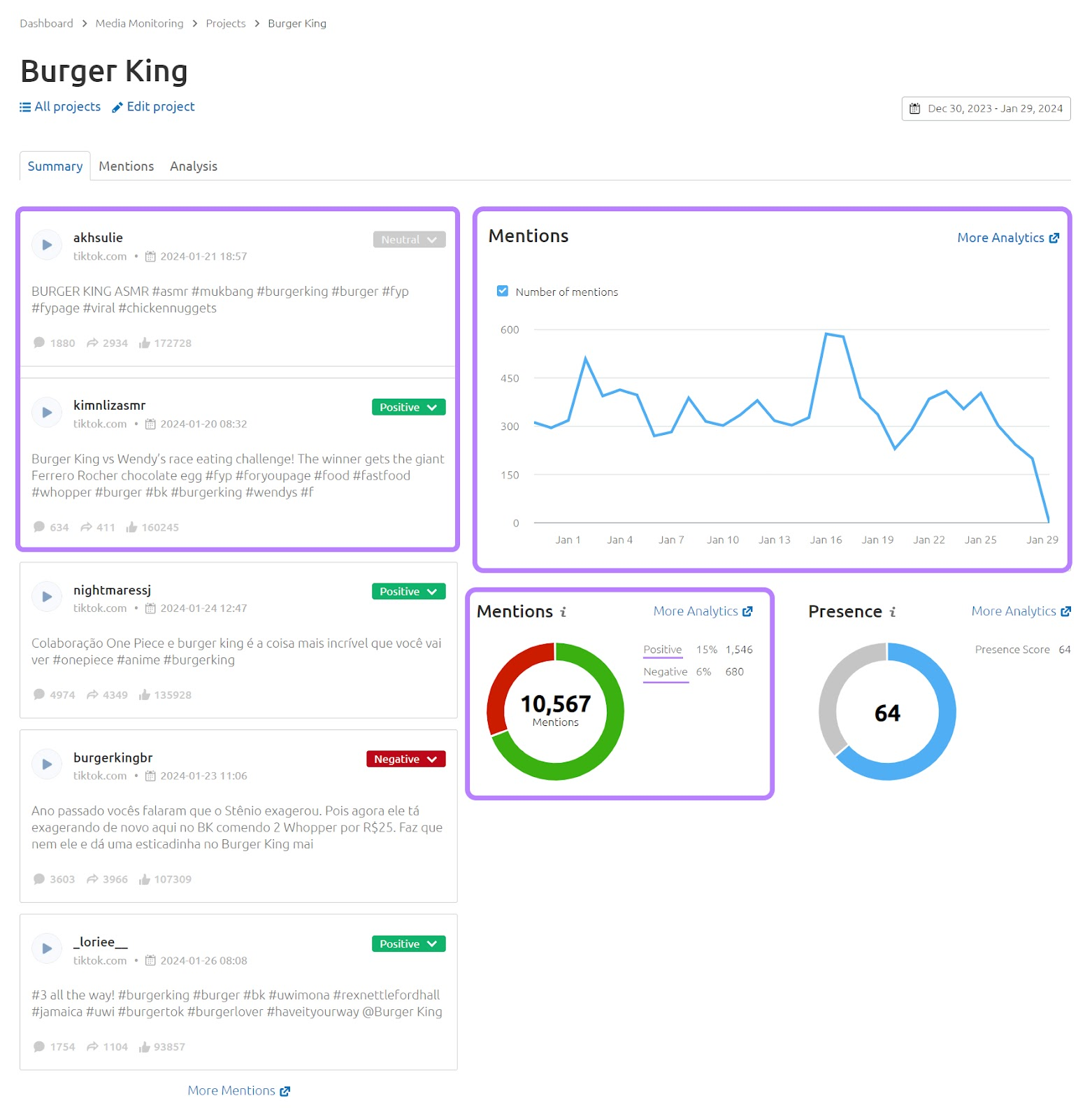
Head to the “Mentions” tab to see a detailed breakdown of where your brand was mentioned.
You can also filter for sentiment (positive or negative) and importance:
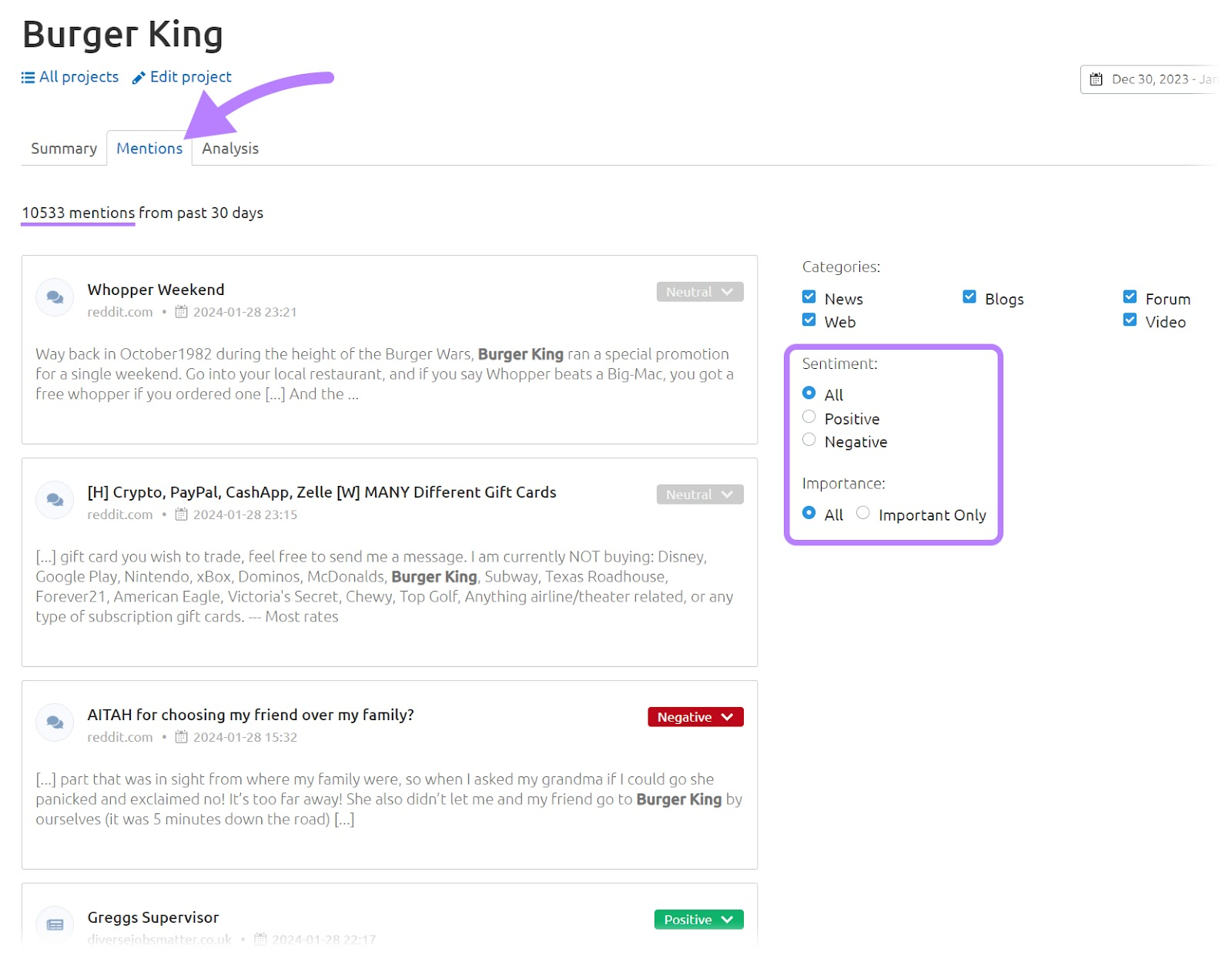
Finally, click the “Analysis” tab to see a list of the most influential sites linking to you. And your estimated reach.
You can also check your “Presence Score”—a metric out of 100 that indicates how popular your brand is.
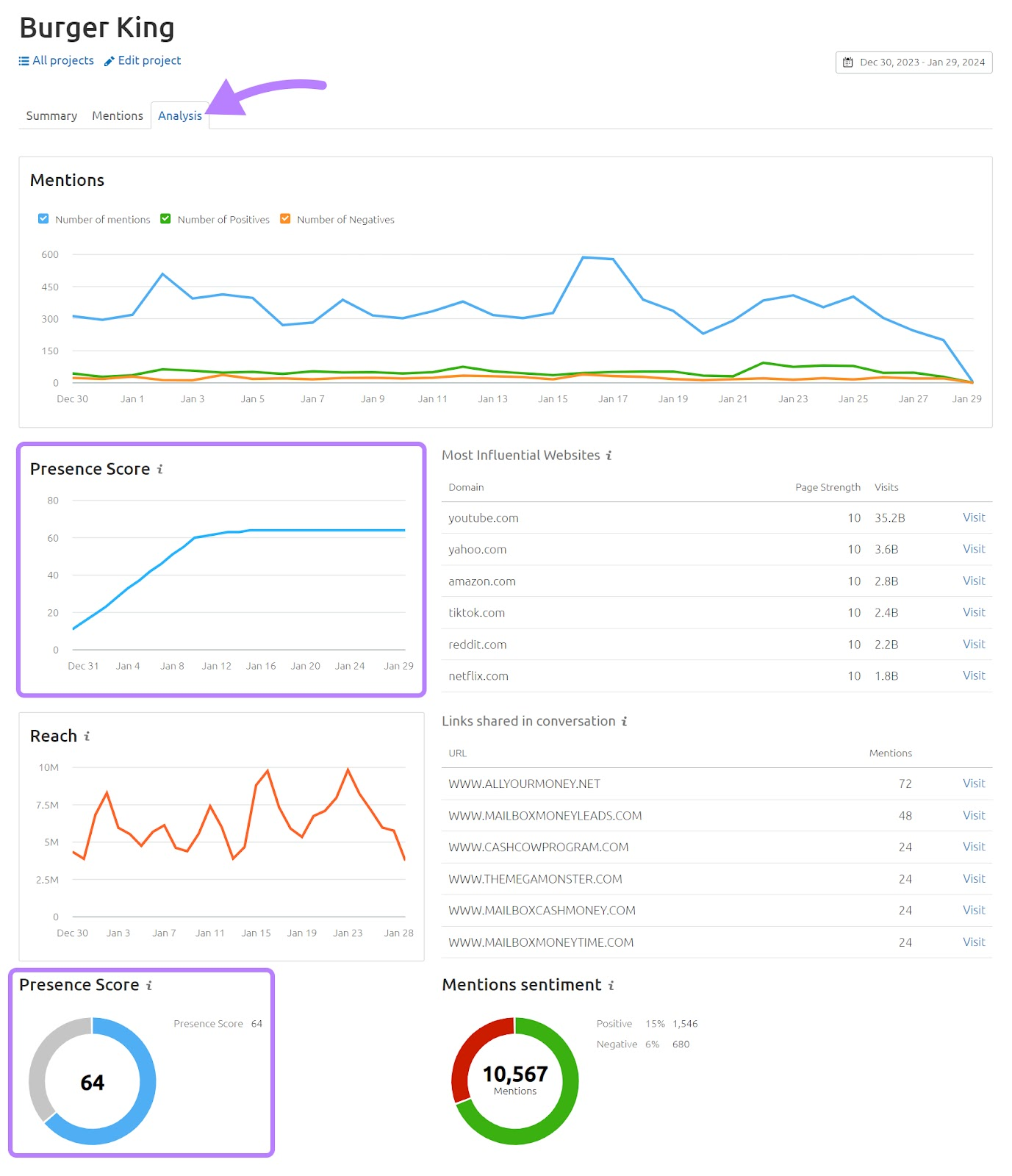
The key is staying consistent with your tracking, so you can adjust your digital PR strategy as needed.


